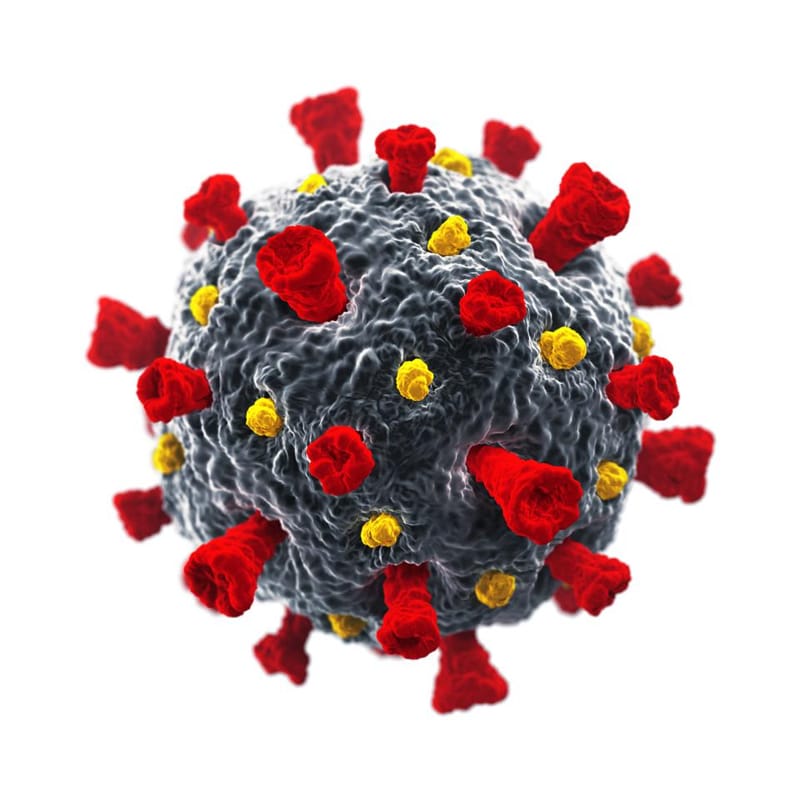omicron paper
Abstract The WHO designated the variant B.1.1.529 a variant of concern (VOC) on 26th November 2021, based on the advice from the organization’s Technical Advisory Group on Virus Evolution, naming the variant Omicron. It is a highly dissimilar variant with multiple numbers of mutations, including up to 32 mutations in the spike (S) protein, possibly associated with humoral immune escape potential and higher transmissibly. Until 22nd December 2021, the Omicron variant had been identified in 110 countries, though this variant continues to be more understood as more data are available.
Read MorePaxlovid : FDA Authorizes First Oral Antiviral for Treatment of COVID-19 Tony Qu, Grade 11 Crescent School, Sunlifegene Academic Program in Medical Science SLAP COVID 19 Research Program Toronto, ON, Canada January 26,2022 With the new variant of concern, Omicron, infecting 95% of all patients with SARS-CoV-2 in the US, effective and accessible drugs are needed to prevent hospitalization and death. On December 22, the US Food and Drug Administration (FDA) officially approved the use of Paxlovid, a drug designed by Pfizer, for patients who tested positive for COVID with mild symptoms. In specific, Paxlovid contains nirmatrelvir tablets and ritonavir tablets co-packaged and prescribed to patients. Nirmatrelvir, also known as PF-07321332, is a 3-chymotrypsin-like protease (3CLpro) inhibitor. 3CLpro is an enzyme that cleaves the coronavirus polyprotein at eleven conserved sites, causing viral maturation, and hence allowing the virus to replicate. 3CLpro inhibitors were first used and demonstrated in 2018 to be effective in treating the 100% lethal feline coronavirus. In the early stages of the COVID-19 pandemic, Pfizer developed the earlier clinical candidate lufotrelvir, but the protease inhibitor drug needed to be injected strictly through intravenous therapy (IV), thus constricting its use to hospital settings. After modifying the tripeptide protein mimetic of lufotrelvir, Pfizer ended up with nirmatrelvir, and launched phase 1 clinical trial in February, 2021. Through EPIC-HR trial data, Pfizer reported positive outcomes compared to placebo. Paxlovid significantly reduced the proportion of people with COVID-19 related hospitalization or death by 88% compared to placebo among patients treated within five days of symptom onset. Ritonavir is another protease inhibitor, but was patented in 1989 and came into medical use in 1996 for HIV/AIDS. Being one of the more researched drugs, side effects such as diarrhea, nausea, and vomiting are known to scientists. Nonetheless, the FDA approved its combination with nirmatrevir in treating SARS-CoV-2. The purpose of ritonavir in Paxlovid is to help slow the metabolism, or breakdown, of nirmatrevir in order for it to remain active in the body for longer periods of time. Although nirmatrelvir is currently being supplied to hospitals worldwide, then to patients, Pfizer and other independent institutes are still monitoring its effectiveness and studying its side effects. Moreover, multiple downsides of nirmatrelvir proves it to not be a ‘wonder drug’ for this pandemic, as it is only effective in mild symptom patients and can only be used for 5 days in a row. As such, there are opportunities for pharmaceutical firms to investigate and develop other medications. In a machine learning assisted study by Jurica Novak and Vladimir Potemkin, it is shown that other 3CLpro inhibitors, including lopinavir, idoxuridine, paritaprevir, and favipiravir, also had high inhibition potentials.
Read MoreThe vaccinated and the sickness of Omicron infection When vaccinated 3 doses, the symptoms have been shown to be most mild.The symptoms are similar to the common cold (Fever, Cough, Fatigue, Congestion etc.). When vaccinated 2 dose have more symptoms than 3 doses. Including more coughing, fever and fatigue than people who have 3 doses. One unvaccinated person died in his 50s with Omicron infection.The loss of smell and taste is uncommon. How long the incubation time for Omicron? According to data, the time for symptoms to develop may be shorter for omicron thant for other variants. The range is from 1 week to 3 days or lower. It is logical that a highly contagious virus would have a shorter incubation tiem as its goal is to infect as many people as it can. What is Variants of concern (VOC)? Utilizing comparative assessment bioinformatic methods, the sequencing information from the new Sars COV2 staining showing the mutation meets the requirements to be a VOI. That means it has an increase in transmissibility, virulence Or, change in disease presentation, decrease in effectiveness of public health measures such as vaccines and diagnostics. The WHO currently designated 5 types of Variant of concern including: Alpha, Beta, Gamma, Delta and Omicron.
Read MoreWhat is variant of concern? Through a comparative assessment of the Sars cov2 genomic sequencing by bioinformatic methods, the mutation showing the variants of interested (VOI) meets being more transmissible, negatively affecting public health and social measures, resistant to vaccines and therapeutics as well as being more severe to a human, all on a global scale. Currently WHO designated total 5 types of variants of concern, including the alpha, beta, gamma, delta, and omicron
Read MoreSummary of Omicron: The Omicron variant of the SARS-CoV-2 virus, which has a pangolineage of B.1.1.529, was identified as a variant of concern on November 26, 2021 by the WHO,It is identified by more than 50 number of mutation with upto 32 mutations on its spike protein, which makes it more transmissible and reduced the vaccine function as a result. Ever since it was labelled as a variant of concern, Omicron has spread to 110 different countries around the world, in all 6 WHO regions. Knowledge and understanding of the variant becomes more sophisticated and niched as time passes and data surrounding the virus becomes more accessible.
Read MoreThe variant was first discover in South Africa on NOV,2021,, and has been detected in more than 85 nations. It is spreading rapidly in several countries, including Canada, Ontario have new Omicron positive cases up to 9000 on Dec 23,2021. Scientists from South Africa found the SARS-COV2 Omicron (B1.1.529) to be by far the most divergent variant characterized by a high number of mutations. The spike protein of the Omicron Variant has more than 30 mutations. It is extremely important to evaluate the influence of Omicron on the effectiveness of treatments. The Scientists from the LKS Faculty of Medicine at the University of Hong Kong first report on how the novel Variant of Concern of SARS-CoV-2, infect human respiratory tract. Researchers discovered that Omicron infects and multiplies up to 70 times faster than the Delta variant. This may explain why Omicron may transmit faster between humans than previous variants. Researchers studies showed that the Omicron infection in the lung is significantly lower than the original variants; thus indicates a lower disease severity. On Dec 23, Scientists from University of Hong Kong and the Chinese University of Hong Kong conjoined and showed that a third dose of Comirnaty vaccine given to the people who already received two doses of either Comirnaty or CoronaVac provides protectives levels of protective antibody against the Omicron Variant. Meanwhile those who received two previous doses and then received a third dose of CoronaVac prove to not provide adequate levels of protective antibodies. Researchers found that two doses of either Comirnaty or Corona Vac vaccine provide tremendously poor virus killing, also known as neutralising, the antibody responses against the Omicron Variant. The research findings also indicate that a third dose of Comirnaty vaccine given to those who received two previous doses of either Comirnaty or CornoVac provides protective levels of antibody against the omicron variant. Professor David Hui urged those who are able to get, but have not received two doses of vaccine to get vaccinated as a matter of urgency. The severity of the case means that if the virus started spreading in Hong Kong, Unvaccinated people who are highest risk of the severe disease - older age or underlying diseases such as diabetes and hypertension, will be at high risk. Prof. David Hui also pointed out that the reduced severity of Omicron epidemics located in South Africa and the United Kingdom was being reported from vaccinated or previously infected population. Hospitals and intensive care units in affected countries are currently being filled at an exponential rate. Reference: 1)https://www.med.hku.hk/en/news/press/20211215-omicron-sars-cov-2-infection 2)HKUMed-CU Medicine joint study finds that third dose of Comirnaty has better protection from COVID-19 variant Omicron https://www.hku.hk/press/press-releases/detail/23804.html
Read MoreThe omicron variant spreads faster, however may not be as severe as other variants like the original SARS-CoV-2 and the Delta variant, due to it not infecting the lower lungs as effectively. Scientists used samples from in human bronchus and lung tissue to study the virus. They used this study to determine the comparison between the omicron variant and Delta variant. Over 24 hours, omicron replicated 70 times more than the delta variant and the original virus in human bronchus. However, they replicated less efficiently in the lung tissue compared to the original variant. It is important to understand that the severity of the disease depends on the individual’s immune response including the dysregulation of the innate immune system and level of cytokine storm , not just the rate of viral replication We need understand that a very infectious virus may cause higher mortality more severe disease even though the virus itself is less severe than other variants. This means that this variant may be very significant in people’s lives. One person has dies after infecting the Omicron in UK who did not taking COVID 19 Vaccine. And UK also reported around 10,000 cases and 10 people hospitalized. Ontario could have more than 10000 daily cases by the end of the year, and will need to introduce restrictions in order to prevent the spread of the virus while people get their booster shots. Summary: 1. Omicron already became the dominant variant in Ontario and the global 2. Omicron infects and replicates 70 times compared to SARS CoV2 / Delta in airways and is better than lung compared to SARS CoV2 / Delta. 3. Omicron may become very severe if not dealt with 4. Boosters are important to reduce the severity of the variant 5. Restrictions must be made to reduce the spread 6. It is also important to increase access to rapid testing Reference: 1. https://www.med.hku.hk/en/news/press/20211215-omicron-sars-cov-2-infection 2. https://www.who.int/news/item/26-11-2021-classification-of-omicron-(b.1.1.529)-sars-cov-2-variant-of-concern
Read MoreTwo years since the emergence of the SARS-CoV-2 pandemic, multiple variants of the virus have emerged such as Alpha, Beta, Gamma and Delta variants. However, compared to previous SARS-CoV-2 variants, Omicron, a new variant, has exhibited an even higher degree of mutation. It is speculated that the variant transmits faster than previous variants as it multiplies and infects the human bronchus. Nevertheless, it does not infect the lower lungs easily, which, according to researchers, might explain the proportionally lower incidence of severe disease in omicron cases. Omicron has both novel mutations that haven't been seen before, as well as a higher likelihood of spreading than other variants. Lawrence Young, a virologist and professor of molecular oncology at Warwick Medical School, said, “This variant carries some changes we’ve seen previously in other variants but never altogether in one virus. It also has novel mutations that we’ve not seen before.” There are more than 50 mutations in the variant's genome, including more than 30 in the spike protein, which has been targeted as a primary target for current vaccines. Using lung tissue to isolate the Omicron SARS-CoV-2 variant, it was compared with the original SARS-CoV-2 and the Delta variant. In comparison to Delta and the original SARS-CoV-2 virus, Omicron replicated roughly 70 times more quickly in human brochium over 24 hours. On the other hand, Omicron expressed lower replication levels in the lung tissue (more than 10 times lower) than the original virus. Despite this, there are still many risks with this novel variant such that the rate at which people are fed into the healthcare system (particularly the unvaccinated) increases, which makes it harder for the healthcare system to cope. Furthermore, disease severity is determined not only by virus replication, but also by host immunity, which can result in dysregulation of the innate immune system or excessive amounts of cytokines in the bloodstream.
Read MoreOn 26 November, the newly emerged variant Omicron was designated a severe acute respiratory syndrome coronavirus 2 (SARS-CoV-2) variant of concern. On November 19 scientists at the Botswana Harvard HIV Reference Laboratory Dr Sikhulile Moyo and his team first discovered the variant Omicron( https://www.thecrimson.com/article/2021/12/6/harvard-botswana-lab-omicron/)The Omicron variant was also discovered at Lancet Laboratories in Pretoria, South Africa. However, that does not necessarily confine the origin of the variant to South Africa because the country’s well-designed genetic surveillance system makes it prone to the discoveries of new variants. Different from previous variants of concern (Alpha, Beta, Gama, and Delta), Omicron displayed far more mutations in its genome. In the spike protein, the new variant had 30 mutations compared to the original viral strain from Wuhan. As seen in the Alpha and Delta variants, mutated spike protein allows the virus to be more transmissible and more likely to evade the immune system and vaccine. The Omicron variant also shares the P681H mutation with the Alpha variant, which affects the proteolytic cleavage site at the junction of the spike protein receptor-binding (S1) and fusion (S2) domains. Moreover, the combination of Q498R and N501Y mutations allows more effective binding of the virus to the angiotensin converting enzyme 2 (ACE2) receptors, thus promoting viral entry into human cells. Fortunately, 80% of epitopes in the spike protein recognized by CD8+ T cells are not affected by the mutations in the Omicron variant, so vaccines still grant a certain level of protection to people. In an experiment, scientists found that Omicron replicated around 70 times more than the Delta variant and the original SARS-CoV-2 virus over 24 hours, but it did not replicate in the lung tissue as well as the bronchus tissue. These findings are well-reflected in the real world as the omicron variant is more infectious but less severe compared to other variants.Ontario was reporting less than 3100 cases on Dec 18,2021; even since Omicron came to Ontario, the province began reporting more than 1000. As of December 14, 1808 cases of SARS-CoV-2 were reported. In South Africa, which is the region that Omicron has affected the most, patients infected by the new variant have a 29% lower risk of being hospitalized. And across the world, relatively less omicron patients are admitted to the ICU.
Read MoreSince November, 2021, the SARS-COV-2 omicron variant has spread across the globe. This variant as several differences compared to other SARS-COV-2 strains. Genetically, Omicron has 60 mutations compared to the original strain, 58 of which cause phenotypic differences. In its proteome, the variant has 30 amino acid changes, 3 deletions and 1 insertion in the Spike protein. Omicron infects faster than the Delta and Original variants due to more rapid multiplication. However, Omicron has less severe symptoms because it does not enter the lower lungs. Researchers compared lung tissue from Omicron and sARS-COV-2 patients. They found Omicron replicates 70 times faster than Delta and original SARS-COV-2 over 24 hrs, but 10 times less efficiently in lung tissue compared to original SARS-COV-2. However, scientists warn that immune response, as well as disease severity, affects health outcomes. Even if Omicron is less deadly, the fact that it infects so many people can cause more severity. Furthermore, Omicron is a different evolutionary strain of SARS-COV-2 compared to Delta. UK has suffered 10,000 cases, 10 people hospitalized and 1 died. Ontario reported 5790 cases on Dec 23,2021,and will be 10,000 cases on the end of 2021.Omicron could become an upper respiratory infection, more similar to the common cold or pneumonia. Omicron infect faster because it infects bronchial tissue and not lungs. Furthermore, Omicron has demonstrated a fast spread from its first plane passenger in South Africa (first case Nov.11) to the UK, Canada and the US. As of Dec. 2021, it has spread to over 80 countries. Omicron poses a problem because two doses may not provide total protection against the virus, although 3 doses may provide stringer immunity. Although the variant seems less pathogenic than previous strains, it is still too early to confirm and caution must be taken without assuming omicron will be less harmful.
Read More









